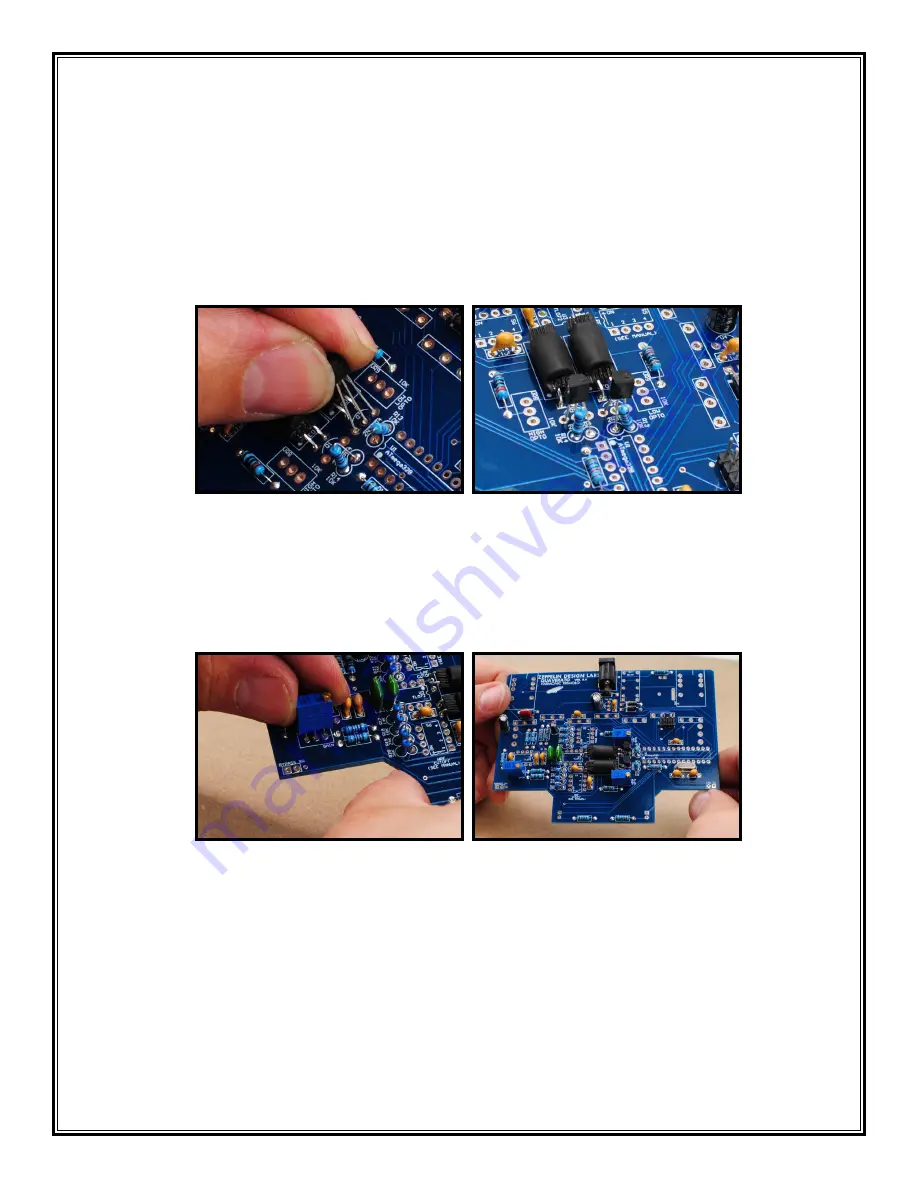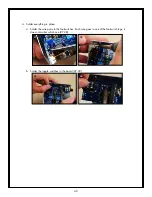
26
8. Transistors: The transistors are in the silver static-control bag. Before you open this bag, review
the notes in Paragraph 10 on page 26 concerning the safe handling of ICs. There are two
transistors in the Quaverato (Q1,Q2). These transistors are labeled 2N3904 (and possibly a
few extra numbers or letters at the end). They look identical to the voltage regulator (labeled
L78L05), so please don’t get them mixed up -- otherwise your Quaverato won’t work! These
transistors are shaped like a three-quarter moon. Notice the PCB graphics around the holes have
a similar shape to show you the component’s correct orientation. Spread the leads out a little bit
so they will fit in their holes and install the transistors in the board (74,75). Bend the leads out on
the other side of the board, solder and clip the leads.
74
75
9. Trimmer Potentiometers: The Quaverato contains 3 trimmer potentiometers (trim pots) in two
different values: 10K, (VR8, VR9, labeled “103”), and 100K (VR10, labeled “104”). You need
to pay close attention to the labels because the pots are otherwise identical. Place VR10 in its
location with the adjustment screw located toward R4 and R5 (76). Place VR8 and VR9 in their
locations with the adjustment screw toward U1 (the big 28-pin chip socket) (77). Solder and clip
the leads.
76
77
10. Integrated Circuits (ICs): This kit contains four IC components of three types: the microcontroller,
two op amps, and a voltage regulator. There is also a pair of transistors that look just like the
voltage regulator, described in paragraph 8 on page 26. These components are packed in
a static-protective silver pouch. In general, ICs are quite sensitive to static electricity and can
easily be damaged. Humans are not sensitive to static electricity at these damaging levels; in
fact, most people can’t even feel a static discharge less than 1000 volts! So it is easy to damage
these components without even knowing it. The ICs in this kit are only moderately sensitive to
static discharge but it is still wise to be careful when handling them. Before touching an IC, and
from time to time while working with them, ground yourself preferably by touching something
grounded to the mains like the metal chassis of a plugged-in amplifier, or a refrigerator. At the
very least touch a large conductive object like a metal desk or filing cabinet.
















































